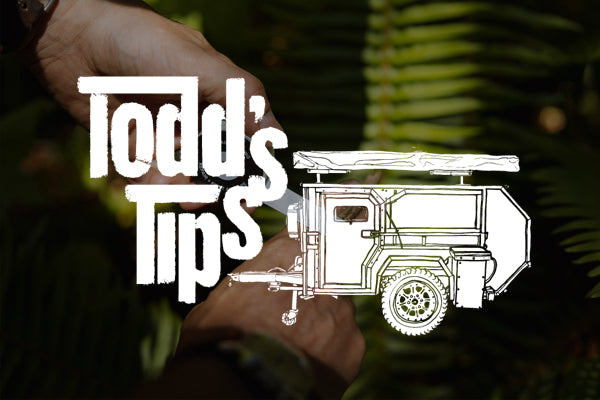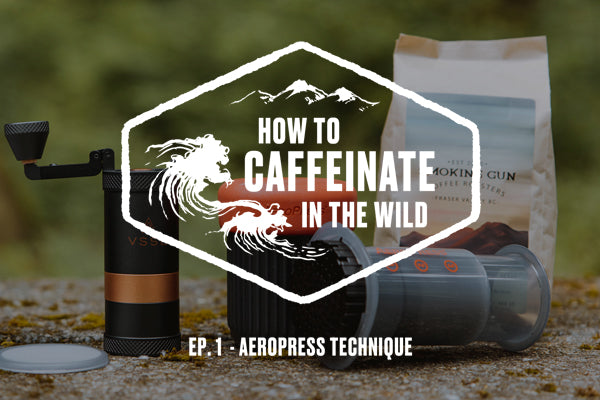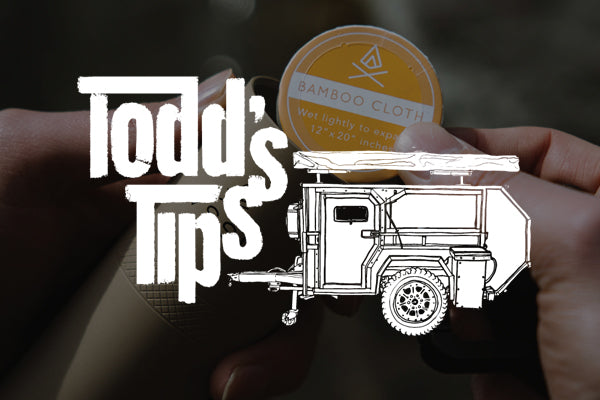
When we were creating our First Aid Kit(s), we asked wilderness survival, SAR and military medical experts to share which first aid component was absolutely essential to their kit. The item they all agreed on was a good quality tape. So we set out to develop and extensively field test what we think might be the best multi-purpose tape for use in the outdoors. In fact, in addition to being great for first aid, our adventure tape is also an essential tool for repair. It was even used as a temporary repair for a hole in the bottom of a stand up paddleboard during a week-long tour of our rugged British Columbia coastline.
As it applies to first aid, the most obvious use for tape is to help cover a wound. If the wound is too big or bleeding too much for a bandage, a solid tape used to hold extra cloth is indispensable.
Next to cuts and illnesses caused by waterborne pathogens, the third most common outdoor injury is “strains and sprains”. We’re often incredibly busy with our hands doing camp work, or using them to work our way through rugged terrain, making hand and finger sprains, or even broken appendages, somewhat common. In an outdoor situation, often the best and only thing you can do is immobilize the injured limb. As shown here, using tape with the addition of a stabilizing medium such as a branch, can greatly reduce movement. This not only helps alleviate discomfort, but can also help prevent the injury from getting worse.
As with all first aid incidents, assessing the severity is super important. A slight sprain may not require heading home, but a broken bone will. In the event of an injury, seek first aid advice to help analyse the situation objectively. And remember, it’s often far better to cut a trip short than to risk further injury to yourself (or even others) if your injury leaves you with reduced mobility, especially in a wilderness situation.
Often overlooked in outdoor situations are blisters. While not necessarily trip ending, they can be a real nuisance. When I was a teenager I attended WOTS (wilderness outripping survival camp) in the summer. In my last year I did COTS (canoe outripping survival camp) and I’ve been hooked on paddling ever since. These are always long arduous hikes, learning to navigate by compass during the day and at night. It was an incredible experience but I’ll never forget this one kid who didn’t manage his footwear and ended up with a couple of nasty blisters. While the rest of us were really enjoying the experience, he was having a super hard time sleeping at night and by the end of the experience, he was miserable and clumsy from lack of sleep.
Our instructor used that to point out the importance of proper foot care. Not just having good shoes or boots, but keeping your feet dry and free from debris. He also stressed the importance of making sure you attend to “hot spots” on your feet as soon as they occur. While our first aid kit has specifically designed gel pads for blisters, even getting a bandage between the hot spot and your footwear can mean the difference between a great experience and a miserable one!
The problem with these more minor first aid related issues is that they tend to not be taken seriously, but can have bigger implications in the long run if not looked after. I hope these tips will help you be mindful of taking steps to prevent the need for first aid in the first place and motivate you to look after issues at their onset and prevent them from becoming more serious problems later in your adventures.








Leave a comment
This site is protected by hCaptcha and the hCaptcha Privacy Policy and Terms of Service apply.